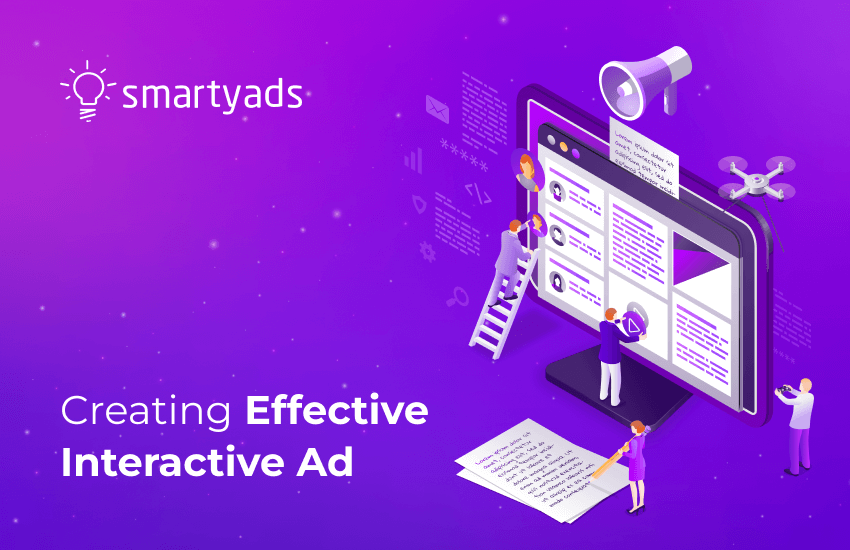Programmatic interactive advertising has emerged as a new and exciting way for brands to engage with their audience. This innovative form of advertising allows marketers to create interactive and engaging campaigns that can be customized and targeted to specific demographics, locations, and interests.
In addition, such a concept as the Metaverse is gaining popularity among advertisers.
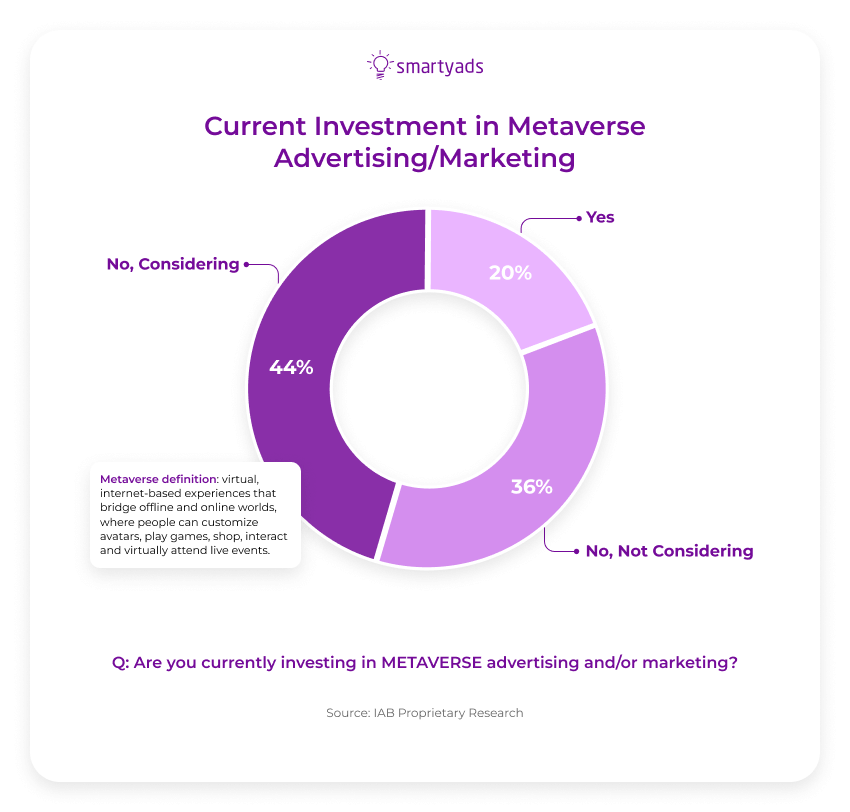
At its core, programmatic interactive advertising involves using data and algorithms to automate the ad-buying process. This means that ads can be purchased and displayed in real time based on various factors, such as the user's browsing behavior, search history, and location.
One of the key benefits of programmatic interactive advertising is its ability to deliver personalized and relevant content to consumers. Using data to understand user behavior and preferences, brands can create ads tailored to their audience's interests and needs. This, in turn, leads to a more positive user experience and higher engagement rates.
Another advantage of programmatic interactive advertising is its flexibility and scalability. Advertisers can easily test different creatives and messaging to see what works best, and they can quickly adjust campaigns based on real-time data and insights. Additionally, programmatic advertising can be used across various channels, including display, video, social media, and mobile, allowing brands to reach their audience wherever they are.
How Do Interactive Ads Maximize Engagement?
Interactive ads are designed to maximize engagement by creating an immersive experience that encourages users to interact with the ad in a meaningful way. Rather than simply presenting a static image or video, interactive advertising provides users with a dynamic and engaging experience that allows them to actively participate in the advertising message.
Here are some ways that interactive ads maximize engagement:
Personalization
Interactive advertising offers a customized approach by tailoring content to the unique interests, behaviors, and demographics of individual users. This level of personalization results in a more engaging and resonant experience for the user, ultimately boosting their likelihood of actively interacting with the advertising content.
Gamification
Many interactive ads incorporate gamification elements like quizzes, puzzles, and games to make the ad more fun and engaging. This encourages users to spend more time interacting with the ad, increasing their chances of remembering the brand and its message.
Dynamic Content
Interactive advertising often features dynamic content that changes in response to user actions. This keeps the user engaged and interested, constantly discovering new information or experiences.
Call-to-Action
Interactive ads typically include a clear call-to-action (CTA), encouraging users to take a specific action, such as clicking a button, filling out a form, or making a purchase. This helps to convert engagement into action, driving measurable results for the advertiser.
Social Interaction
Many interactive advertisements include social sharing features, allowing users to share the ad with their friends and followers on social media. This increases the ad's reach and creates a sense of social proof, as users are more likely to engage with content that has been recommended by someone they know and trust.
Pros and cons interactive ads offer
Interactive advertising has become a popular marketing tool for brands looking to engage with their audience in a more meaningful way. However, like any advertising format, interactive ads come with their own set of pros and cons.
Here are some of the main pros and cons of interactive ads:
Pros
Increased engagement
Interactive ads are designed to capture the user's attention and keep them engaged for longer periods. This can lead to higher brand awareness, consideration, and loyalty.
Personalization
Interactive advertisements have the capability to be customized according to users' interests, preferences, and behaviors. This customization delivers a highly personalized experience that deeply connects with the user, significantly raising the chances of active engagement and successful conversions.
Measurable results
Interactive ads can provide detailed analytics and insights into user behavior, allowing advertisers to measure the success of their campaigns and make data-driven decisions.
Brand differentiation
Interactive ads can help brands stand out from the competition by offering a unique and innovative experience that sets them apart.
Cons
Cost
Interactive ads can be more expensive to produce than traditional advertising formats, as they require more resources and development time.
Technical issues
Interactive ads can be complex and may not work properly on all devices or browsers, leading to potential technical issues impacting the user experience.
User experience
While interactive ads can be engaging, they can be intrusive or annoying if not executed properly. This can lead to a negative user experience and damage the brand's reputation.
Limited reach
Interactive ads may not be suitable for all audiences or demographics, which can limit their reach and effectiveness.
Interactive ads can be an effective marketing tool for brands looking to engage with their audience in a more immersive and personalized way.
However, they also come with potential drawbacks, such as increased cost, technical issues, and the risk of a negative user experience. As with any marketing strategy, it's important to carefully consider the pros and cons before investing in interactive ads.
Types of interactive ad
Digital interactive ads are a popular marketing tool that allows brands to create engaging and interactive experiences for their audience. There are many different types of digital interactive ads, each with its own unique features and benefits. Here are some of the most common types of digital interactive ads:
Quizzes and Polls
Quizzes and polls are interactive ads that allow users to answer questions about the brand or product. This type of ad is popular because it allows brands to gather valuable data on their audience while providing a fun and engaging experience.
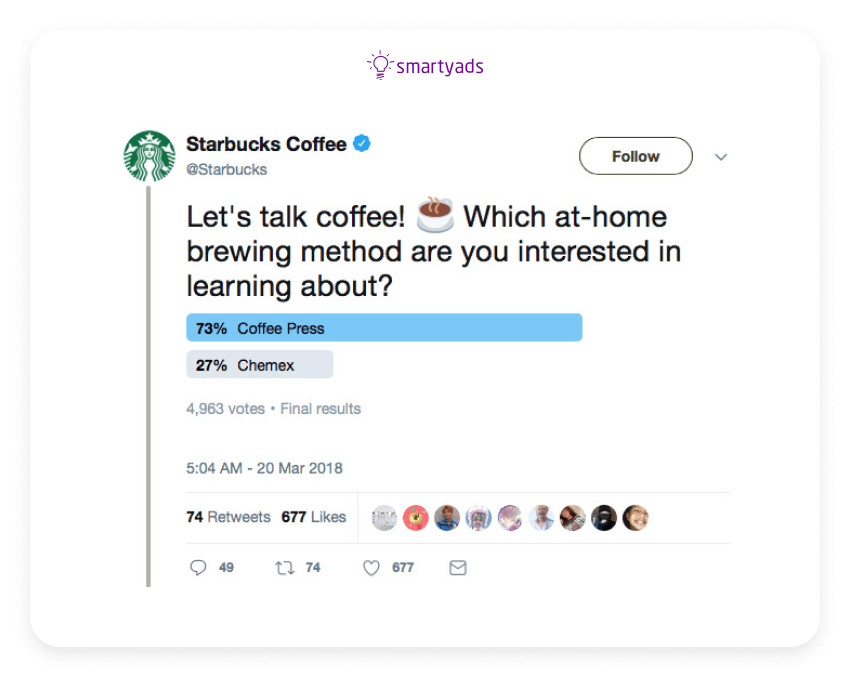
Quizzes and polls are useful in interactive ads as they capture the user's attention and keep them engaged, personalize their experience, provide valuable feedback, educate users about a product or service, and create a fun and memorable experience. By using quizzes and polls, advertisers can make their ads more engaging, personalized, educational, and entertaining while gaining valuable insights and feedback from their target audience.
Playable ads
Playable ads are interactive ads that allow users to engage with a product or service in a game-like experience. Playable advertising can be found on various platforms, including social media (e.g., interactive Facebook ads), mobile devices, and websites. They typically offer a short and immersive experience showcasing the benefits and features of the advertised product or service.
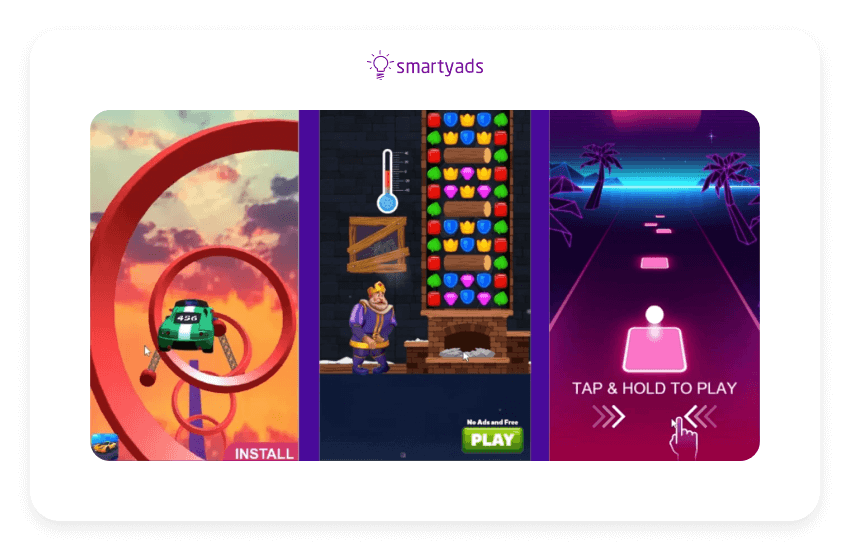
One of the main advantages of playable interactive ads is their ability to increase engagement and improve conversion rates. By offering a hands-on experience with the product or service, users can better understand its value and benefits. This can help build trust and credibility with the user and increase the likelihood of conversion.
Interactive Video ads
Interactive video advertising allows users to interact with the content by clicking on different elements, such as buttons or hotspots. This type of ad can be highly engaging and provide a more interactive involvement for the user.
Interactive video advertising is a type of ad format that combines the power of video with interactive elements such as clickable buttons, hotspots, quizzes, and polls. Interactive video ads can be found on various platforms, including social media, mobile apps, and websites. They typically offer a more engaging and immersive experience for the user, allowing them to interact with the content in real time.
Interactive video ad can be designed in different formats, including 360-degree video ads, shoppable videos, and gamified videos. They can also be tailored to different audiences, using targeting options such as demographics, interests, and behaviors.
Augmented Reality (AR)
AR ads use technology to overlay digital elements onto the user's real-world environment. This type of ad can be highly immersive and provide a unique and memorable experience for the user.
Augmented Reality (AR) is a technology that superimposes digital content onto the real world, creating a more captivating and interactive experience for the user. AR can be used in interactive ads to offer a unique and engaging experience that showcases the features and benefits of a product or service.
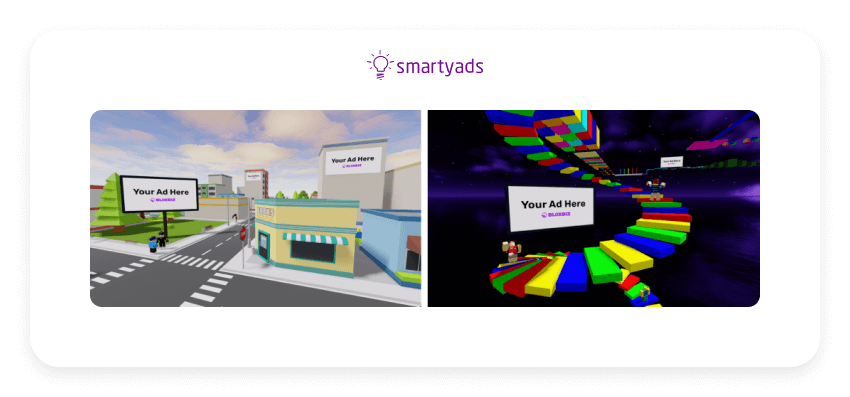
Augmented Reality can be used in different formats, including image recognition, marker-based AR, and location-based AR. AR can also be tailored to different audiences using targeting options such as demographics, interests, and behaviors.
One of the main advantages of AR in interactive ads is its ability to provide a hands-on experience with the product or service, allowing the user to visualize and interact with it in real time. AR can also be used to gamify the user's experience by adding elements such as challenges, rewards, and social sharing.
AR in interactive ads can also provide valuable insights and feedback to the advertiser, such as the user's behavior, preferences, and engagement levels. AR can also increase brand awareness and loyalty by creating a more memorable and shareable experience for the user.
Virtual Reality (VR)
VR ads use technology to create a fully compelling digital experience for the user. This type of ad can be highly engaging and provide a powerful emotional impact.
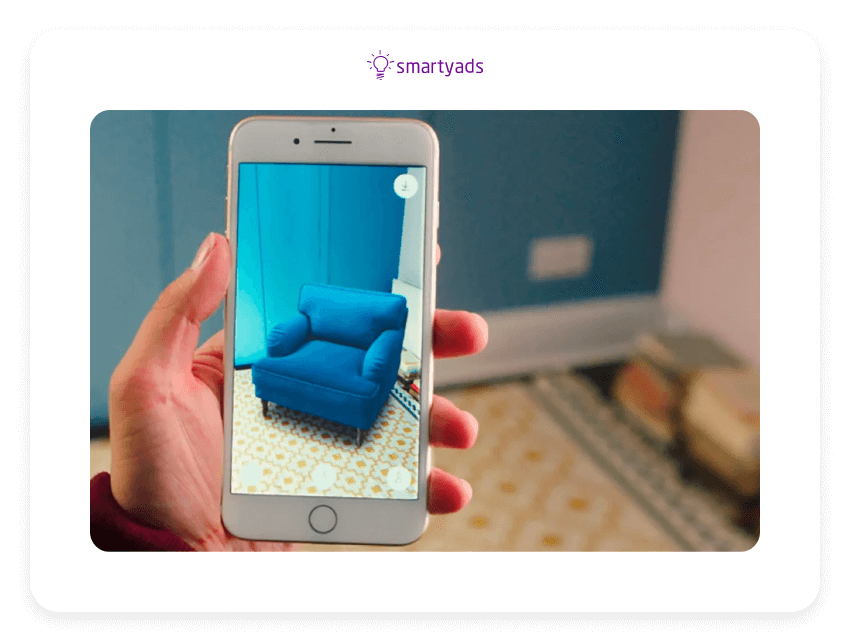
In terms of interactive ads, VR can be used to create a highly immersive and realistic experience for the user, allowing them to interact with the product or service in a more tangible and memorable way. On the other hand, AR can be used to provide a more personalized and contextually relevant experience for the user by overlaying digital content onto their real-world environment.
Interactive Display Ads
Interactive display ads are traditional banner ads with interactive elements, such as animations or videos. Interactive display ads can effectively capture the user's attention and drive engagement.
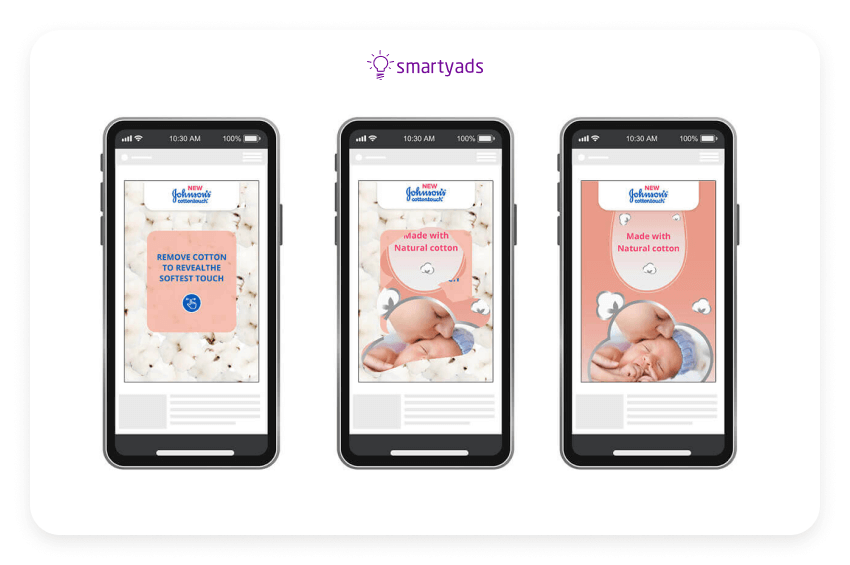
Interactive display ads are a type of digital advertising that engage users through interactive elements that allow them to interact with the ad. This could be through clicking, tapping, or swiping on different areas of the ad. By allowing users to interact with the ad, brands can create a more engaging, memorable experience.
These ads can help brands achieve a range of marketing objectives, including increasing brand awareness, driving engagement, and boosting conversions. By offering a more interactive experience, interactive display ads can provide a unique opportunity for brands to stand out from their competitors and create a lasting impression on their target audience.
Interactive voice ads
Interactive voice advertising is a relatively new form of digital advertising that allows users to interact with audio ads through voice-activated assistants such as Amazon Alexa or Google Assistant. These ads offer a new way for brands to engage with their audience and provide a more personalized experience for users.
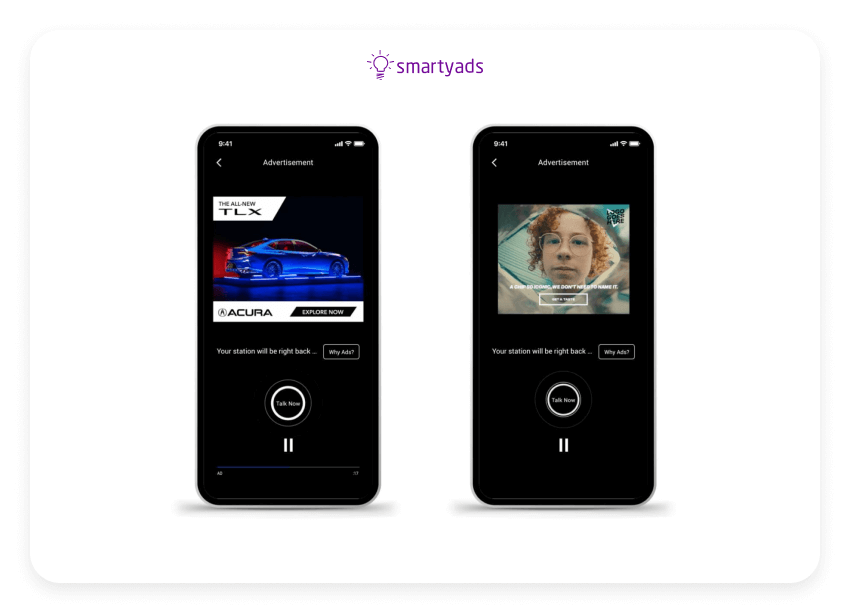
Interactive voice ads can take different forms, such as a question and answer format, where the user responds with their voice, or a conversation that guides the user to a desired action, such as making a purchase or scheduling an appointment. Brands can also incorporate elements such as music, sound effects, or celebrity voiceovers to make the ads more engaging and memorable.
One of the benefits of interactive voice ads is that they offer a hands-free experience for users. With voice-activated assistants, users can interact with the ads while multitasking or performing other tasks, such as cooking or exercising. This can increase the likelihood of user engagement and provide a more seamless experience.
How to make a good interactive ad campaign?
In fact, planning interactive advertising campaigns is not much different from planning traditional ad campaigns. Here are some key steps to follow to create a good interactive advertising campaign:
Define your objectives. Start by defining the objectives of your ad campaign. What do you want to achieve with your ad campaign? Are you looking to increase brand awareness, drive engagement, or boost conversions? You can create more targeted and effective ad campaigns by clearly defining your objectives.
Understand your target audience. It's important to have a deep understanding of your target audience, including their behaviors, preferences, and interests. This will help you create an ad campaign that resonates with your audience and encourages them to interact with your content.
Choose the right format. Various interactive ad formats are available, such as quizzes, polls, videos, games, and more. Choose the format that best fits your brand and objectives.
Create compelling content. Your interactive ad campaigns should have high-quality, compelling content that engages your audience and encourages them to interact with your ad. The content should be relevant to your audience and aligned with your brand values.
Make it easy to interact. Your interactive ad should be easy to use and navigate. Make sure it is mobile-friendly, loads quickly, and has clear instructions on how to interact with the content.
Test and optimize. Once your ad campaign is live, track its performance and optimize it based on the data. A/B testing can be a powerful tool for determining which elements of your ad campaign are most effective and should be improved.
Continuously improve. Keep learning and improving your ad campaigns based on the data and feedback you receive. A successful interactive ad campaign is one that is constantly evolving and improving.
Bottom line
Interactive ads have emerged as a powerful tool for brands to engage with their target audience and achieve their marketing objectives. By offering a more immersive and interactive experience, interactive advertising can increase user engagement, boost conversions, and improve brand awareness.
However, creating a successful interactive ad campaign requires careful planning, execution, and optimization. Brands must have a deep understanding of their target audience, choose the right ad format, create compelling content, make it easy to interact, test and optimize, and continuously improve their ad campaigns.
If you want to add interactive advertising to your advertising strategy, then you can do it with our SmartyAds DSP! Feel free to contact us!
